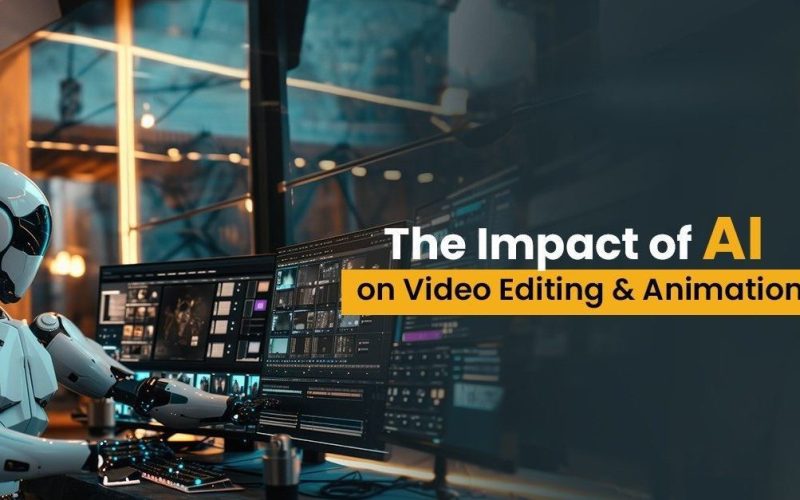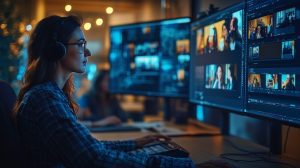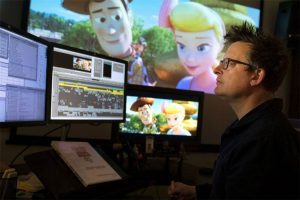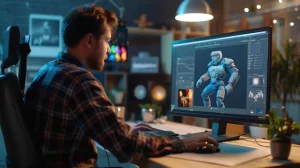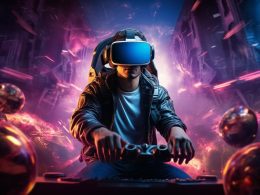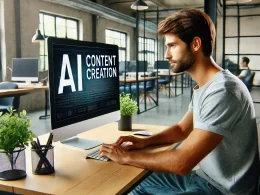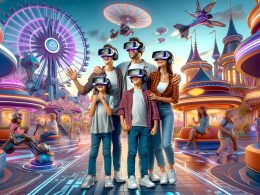Introduction
The advent of Artificial Intelligence (AI) has revolutionized numerous industries, and the realms of video editing and animation are no exceptions. This article explores how AI is reshaping these fields, streamlining workflows, enhancing creativity, and presenting unique challenges.
What Is AI in Video Editing and Animation?
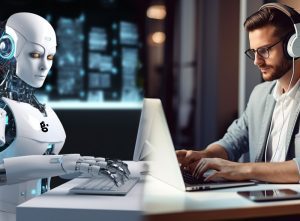
AI in video editing and animation involves using machine learning algorithms to automate and enhance creative processes. From generating realistic visuals to improving editing efficiency, AI enables tasks like scene recognition, color grading, and even storytelling through data-driven techniques.
The Rise of AI in Video Editing and Animation
AI is becoming more popular in video editing and animation. As technology improves, AI tools are easier to use, helping creators improve their work in new ways. These tools can look at footage, suggest edits, and even create realistic animations, making the production process faster and more creative.
AI in Video Editing and Animation
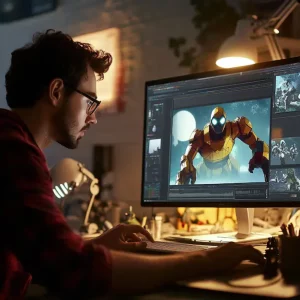
AI can analyze lots of data and do complex tasks, making it a big help for video editing and animation. It now assists with things like color correction, editing scenes, and even creating realistic animations. This lets creators spend more time focusing on storytelling and less on repetitive work.
AI Enhancing Storytelling in Animation
AI is making storytelling in animation better. For example, it can create smoother scene transitions or suggest ways to improve a story based on successful movies. AI can even predict what types of characters or settings will be popular with audiences, helping animators focus on creating strong, engaging stories.
AI’s Impact on Animation Styles
AI is also helping animators explore different animation styles. With AI tools, they can easily change things like colors or textures of characters and backgrounds. This makes it quicker and cheaper to try new styles without starting from scratch, allowing for more creative freedom.
How AI Enhances Video Editing
1. Automating Repetitive Tasks:
AI tools can help editors by automatically cutting, organizing, and tagging video clips. This saves time by instantly identifying important moments and creating rough edits without much manual work.
2. Better Effects and Transitions:
AI-powered software helps editors create smooth transitions and special effects. This makes it easier to achieve professional results, even if the editor isn’t an expert in using advanced tools.
3. Smart Improvements:
Programs like Adobe Premiere Pro use AI to improve video quality. They can automatically fix lighting, steady shaky footage, and enhance audio, making the editing process quicker and simpler.
AI in the Creation of Virtual Characters
AI is becoming key in making virtual characters look realistic. It helps animators design characters with lifelike movements and expressions, making them seem more real. AI also ensures that characters’ actions fit well with their surroundings, adding to the realism. This is especially useful when creating virtual actors for video games, movies, or other digital media.
AI-Assisted Color Grading in Video Editing
Color grading is an important step in video editing that makes the footage look better. AI can help by automatically adjusting the colors to match the mood or theme of the video. This saves time and keeps the look consistent across all scenes, especially when there’s a lot of footage. AI can also suggest ways to improve the scene’s look, helping editors fine-tune their work.
AI’s Role in Animation
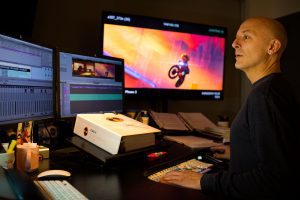
1. Realistic Character Animation:
AI uses motion capture and deep learning to make character movements look more realistic. Tools like DeepMotion can automatically create complex animations, saving animators a lot of time.
2. Artistic Styles and Scene Creation:
AI can copy specific art styles or even create new scenes from scratch. This gives animators more creative freedom and reduces their workload.
3. Faster Rendering:
Rendering, which normally takes a lot of time, can be sped up with AI. AI-based systems can produce high-quality results in just minutes, instead of hours or days.
Benefits of AI in Video Editing and Animation
AI offers many benefits for video editing and animation. It saves time by handling repetitive tasks like cutting scenes, adjusting colors, and adding effects. This lets editors and animators focus on being creative. AI also helps improve the quality of the final video, making it look polished and professional. It can even personalize content to match what the audience likes, helping to engage viewers more easily.
AI and Motion Capture in Animation
Motion capture is a technique that records real human movements and applies them to animated characters. AI makes this process faster by automatically cleaning up and improving the recorded movements. This saves animators time and ensures the movements are smooth and realistic. As a result, characters in animated movies or video games can move more naturally, making the animation feel more lifelike.
The Role of AI in Video Editing and Animation
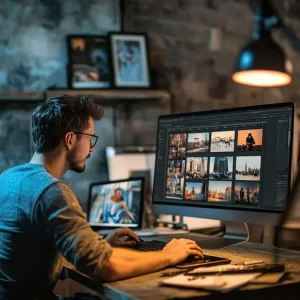
AI plays a big role in helping creators work more efficiently. In video editing, it can automatically add transitions, fix shaky footage, and even suggest the right music for a scene. In animation, AI can help with tasks like making movements look realistic or improving facial expressions. These tools help artists work faster and get better results.
Automation: Saving Time and Effort
One of the biggest ways AI helps is by automating tasks. It can manage things like cutting video clips, fixing shaky footage, and applying filters. In animation, AI makes tasks like creating keyframes and tracking movement easier. These tools speed up production and lower costs, making it easier for more people to create high-quality content.
Enhancing Creativity Through AI Tools
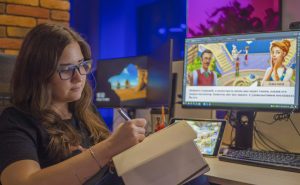
AI is more than just automation it also helps creators be more creative. For example, AI tools in animation can generate facial expressions or realistic movements, letting animators experiment with complex scenes easily. In video editing, AI can suggest edits, transitions, or music that fit the mood of a scene, inspiring new creative ideas.
Personalized Content with AI
AI helps editors and animators create personalized content for different audiences. By analyzing what viewers like, AI can adjust videos to suit specific tastes. This is especially useful in marketing and entertainment, where connecting with the audience is key.
AI-Assisted Editing for Social Media Content
Social media content needs to be created quickly to keep up with trends. AI tools help by automatically adjusting videos for different platforms, like cropping them to the right size or adding text and effects. This helps creators produce content faster and makes sure it’s optimized for their audience, helping them reach more people.
AI’s Impact on Animation Workflows

In animation, AI helps speed up processes that would otherwise take a lot of time. Creating smooth animations involves drawing many frames to show movement. AI can automatically generate in-between frames, making animation less labor-intensive. It can also assist with motion tracking, ensuring that characters move in a realistic way. This helps animators save time while maintaining high-quality animation.
Personalized Content Creation with AI
AI is helping video editors and animators create personalized content more easily. By analyzing data from viewers, AI can help creators tailor videos to specific audiences. For example, AI can suggest changes to make a video more engaging based on the preferences of the viewer. This is particularly useful for marketers who want to create content that resonates with different groups of people, leading to better audience engagement.
AI in Visual Effects and Quality Enhancement
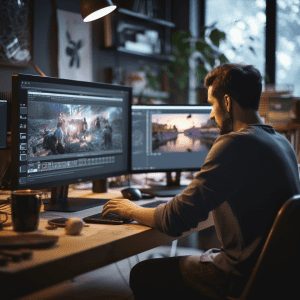
AI plays a key role in enhancing the visual quality of videos and animations. It can improve image resolution, remove noise, and even add realistic visual effects like fire or smoke. In animation, AI can help with textures and lighting, making animated scenes look more lifelike. These tools ensure that the final product meets high standards without requiring extensive manual work.
AI’s Assistance in Real-Time Editing
Real-time editing is another area where AI is making a big impact. Some AI tools can edit videos as they are being shot, helping filmmakers see the final result immediately. For example, AI can adjust camera settings in real-time to improve lighting or correct color imbalances. This instant feedback can be incredibly useful in fast-paced environments like live broadcasts or movie sets, where quick decisions are crucial.
Ethical Concerns and AI in Video Editing and Animation
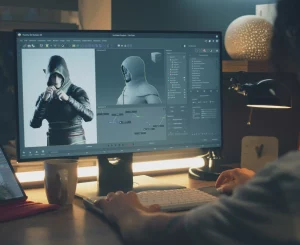
While AI offers many benefits, it also raises some ethical concerns. One issue is the potential for over-reliance on automation, which might lead to a loss of human creativity in the process. Some worry that AI-generated content could replace jobs in the video editing and animation industries, making it harder for artists to find work. As AI tools become more advanced, finding a balance between automation and human input will be essential to ensure that creativity isn’t sacrificed.
Challenges in Implementing AI in Video Editing and Animation
While AI offers many benefits, it also brings some challenges. These include the high cost of using advanced AI tools, concerns about relying too much on automation, and the possibility of job losses in traditional roles. Creators also need to find a balance between using AI and keeping their personal creative touch.
1. Loss of Creative Control
AI can handle many tasks, but it may take away some of the personal style and originality that comes from human creativity.
2. High Initial Costs
Advanced AI tools can be expensive, which makes it harder for small teams or startups to afford them.
3. Skill Gaps
Not all creators know how to use AI tools, so they may need extra training to get up to speed.
Future of AI in Video Editing and Animation
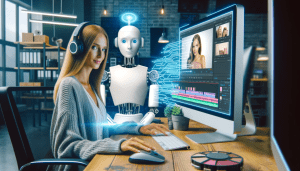
The future of AI in these fields looks promising. Innovations like deepfake technology, real-time rendering, and AI-driven storytelling are just the beginning. As AI evolves, it will further blur the line between reality and imagination, unlocking endless possibilities for video editors and animators.
Analysis Table: Benefits and Challenges of AI in Video Editing and Animation
| Aspect | Benefits | Challenges |
|---|---|---|
| Automation | Speeds up production and reduces costs | High initial implementation costs |
| Creativity | Provides innovative tools for experimentation | Risk of over-reliance, potentially stifling originality |
| Personalization | Tailors content to audience preferences | Ethical concerns about data privacy |
| Quality Improvement | Enhances visual and motion quality with AI corrections | Technical learning curve for creators |
Comparative Table: Traditional vs. AI-Enhanced Processes
| Feature | Traditional Video Editing | AI-Enhanced Video Editing |
|---|---|---|
| Workflow Speed | Time-consuming and labor-intensive | Fast and efficient |
| Quality of Output | Dependent on editor’s skill | Consistent, often higher quality |
| Cost | High due to manual efforts | Reduced costs over time |
| Innovation Potential | Limited to human capabilities | Enhanced with AI suggestions |
Conclusion
AI has transformed video editing and animation by automating tedious tasks, enhancing creativity, and enabling personalized content. While challenges like costs and ethical concerns remain, the future holds immense potential for innovation. Creators who adapt to AI’s capabilities can elevate their craft, producing captivating, cutting-edge content.






